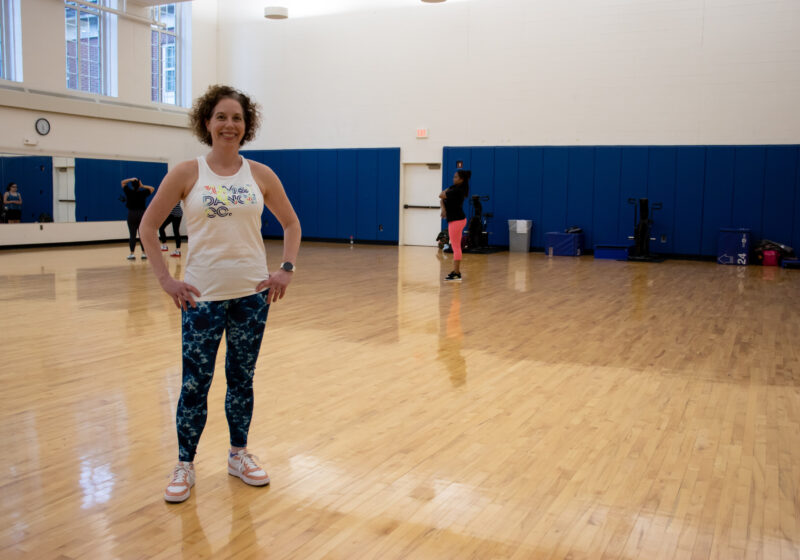Another year is coming to an end, and while we are all preparing our juries and getting ready for summer, the end of the year can mean only one thing to me – time for the annual Eastman School Symphony Orchestra/Eastman-Rochester Choir concert.
The first piece on the program was Brahms’ “Schicklsalslied,” or “Song of Destiny.” Mark Bartel, a doctoral choral conducting student, conducted the concert.
The choice to start the concert with this optimistic and fluffy piece of classical music was a wise one, and the orchestra painted a tastefully serene scene in Brahms’ short poem reflecting on destiny.
The orchestra gave the piece a very secure opening – a security that was quickly destroyed by the first entrance and cluster-tone of the Eastman-Rochester Chorus, an ensemble made up of one part Eastman School of Music singers, two parts Eastman non-vocal performance majors and five parts random people from the community.
For clarity, think of what the Eastman Wind Ensemble would sound like with a horn section made up of Aural Skills TAs and “Java’s Dude” as your bassoonist.
The orchestra, for the most part, sounded very polished. First and foremost, the balance of the string sections was amazing. The violins were generally in tune and retained a dark sound, the cellos and basses added a proportionate low-end, and there were even times when I could distinctly hear the violas. The woodwinds were also solid, with special recognition going to the flutes, which seemed to be the most confident section. Also, there was very tasteful and well-executed timpani playing to go along with the warm colors being emitted by the orchestra. With the exception of a couple of out-of-tune horn chords, I barely even noticed the brass, a job well done in a choir concert.
In “Schicklsalslied,” there were some very dramatic moments of released tension that were really nice, and emotionally, the piece seemed to go somewhere. Bartel’s conducting was precise and measured, but even with his face turned away from the audience, I could tell he was mouthing along with the chorus every syllable of the way.
After some sort of hybrid intermission/break and a resetting of the stage took place, the conclusion of the program was ready to resume with William Weinert conducting Haydn’s Mass in B-flat Major, or “Harmoniemesse.”
From the start of Haydn’s Mass, there was a noticeable difference in the sound of the orchestra, as it seems that Weinert’s lethargic and imprecise conducting movements were having an immediate effect on the sound quality being produced by the musicians.
I felt like the woodwind sections became more indistinct during the Haydn, as they need to play out in order to be heard over 200 singers. Maybe it’s my background hearing the flamboyant sounds of the San Francisco Symphony under the baton of Michael Tilson Thomas, or my daily diet of doctored studio recordings of orchestras, but I could have used more impact, energy and sound from the orchestra.
When one of the movements had ended, Weinert had the 200-person Eastman-Rochester Chorus take their seats. Now, I want you to close your eyes – not until the end of the sentence, hopefully – open up your ears – hopefully in the figurative sense of the word – and imagine the sound created by hundreds of people simultaneously sitting down on old creaky lawn chairs. It’s probably not the ambience Haydn had envisioned separating the movements of his Mass. Even more humorous, though, is the fact that literally seconds after taking their seats in such a comically, noisy fashion, the chorus was then made to stand right back up making just as much noise as before. Believe it or not, this pointless parade of concert etiquette took place twice, appropriately garnering giggles from the audience each time. Besides the immediate comedic value that benign minutia such as this has on me, this moment also took away whatever serious musical experience this concert might have been attempting to deliver.
I am not a person who believes that classical music is stuffy and boring, and I strongly believe that a piece of music is only as intense as you make it. I also believe that often a lot of emotion and intensity is lost in the actual process of presenting, as well as attending, a classical music concert. How is it possible that during the jubilant “Sanctus” of Haydn’s B-flat Mass that every musician, especially the conductor, looks incredibly restrained and has a glazed over look? Why is it that even our fellow musician colleagues in attendance at this concert can barely stay awake? If we can barely make it halfway through a 48-minute piece without yawning and checking our watches, then what does that say about the current state of our already dwindling art?
Yes, I do love the exhilarating music of Mahler, but I don’t subscribe to the notion that Haydn is boring. It can be, especially under the uninspired baton of Weinert, but it doesn’t have to be.
I was clearly not sold on this performance of the Haydn B-flat Mass, and I have a feeling many others weren’t either. All of the notes were there, but I wasn’t sold What is selling? Put simply, a sale is the transfer of enthusiasm from one person to another.
Unfortunately, there was no enthusiasm to transfer through this performance, and judging from the high achievements of the Eastman School Symphony Orchestra in the past year, I believe that this lack of enthusiasm stems from the conductor.
At the conclusion of the Mass, Weinert stumbled to an unconvincing and inconclusive end that put a period on what felt like an incomplete and incoherent paragraph of a performance.
Levy can be reached at jlevy@campustimes.org.
